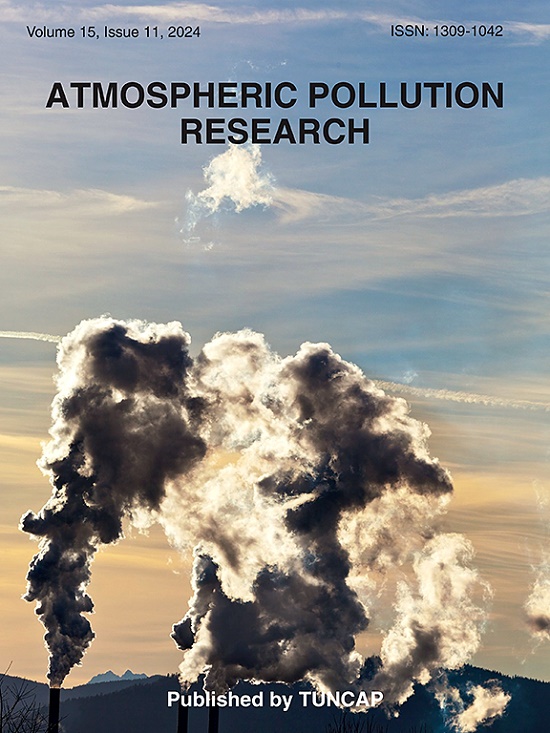Machine learning analysis of drivers of differences in PAH content between PM1 and PM10 in Zagreb, Croatia
IF 3.9
3区 环境科学与生态学
Q2 ENVIRONMENTAL SCIENCES
引用次数: 0
Abstract
Particulate matter (PM) is a critical component of air pollution, with its size fractions, PM1 and PM10, posing varying risks to human health. Among its constituents, polycyclic aromatic hydrocarbons (PAHs) are of particular concern due to their toxicity and ability to affect respiratory health. PM1 particles, being smaller, can penetrate deeper into the respiratory system, making the distribution of PAHs across PM1 and PM10 especially relevant. This study examines the seasonal patterns and factors influencing PAH concentrations in PM1 and PM10 collected in Zagreb, Croatia. A combination of machine learning (ML) techniques, including Random Forest (RF) regression and Principal Component Analysis (PCA), and statistical approaches like t-tests and Cohen's d, were applied to explore these relationships. Post-hoc interpretation using SHapley Additive exPlanations (SHAP) clarified the contribution of various predictors in the models. Results indicated that PAH concentrations contributions were higher in PM1 than PM10, posing greater health risks associated with finer particles. Seasonal trends showed increased PAH levels during winter and spring, primarily driven by heating activities and temperature inversions. The study also highlighted the "J_Curve_Day" variable as the most critical predictor in RF regression models, capturing the influence of seasonal changes on PAH levels through its representation of meteorological conditions and atmospheric processes. These insights shows the importance of understanding seasonal variability in PAH distributions within PM to inform air quality management and public health strategies.
机器学习分析克罗地亚萨格勒布PM1和PM10之间多环芳烃含量差异的驱动因素
颗粒物(PM)是空气污染的一个重要组成部分,其大小组分PM1和PM10对人类健康构成不同的风险。在其成分中,多环芳烃(PAHs)因其毒性和影响呼吸道健康的能力而受到特别关注。PM1颗粒较小,可以深入呼吸系统,这使得多环芳烃在PM1和PM10中的分布尤为重要。本研究考察了克罗地亚萨格勒布收集的PM1和PM10中多环芳烃浓度的季节模式和影响因素。结合机器学习(ML)技术,包括随机森林(RF)回归和主成分分析(PCA),以及t检验和Cohen's d等统计方法,应用于探索这些关系。使用SHapley加性解释(SHAP)的事后解释澄清了模型中各种预测因子的贡献。结果表明,PM1中的多环芳烃浓度贡献高于PM10,与细颗粒相关的健康风险更大。冬季和春季多环芳烃含量增加,主要受加热活动和温度逆温的影响。该研究还强调了“J_Curve_Day”变量是RF回归模型中最重要的预测因子,通过其对气象条件和大气过程的表示来捕捉季节变化对多环芳烃水平的影响。这些见解表明,了解PM内多环芳烃分布的季节性变化对于为空气质量管理和公共卫生战略提供信息的重要性。
本文章由计算机程序翻译,如有差异,请以英文原文为准。
求助全文
约1分钟内获得全文
求助全文
来源期刊

Atmospheric Pollution Research
ENVIRONMENTAL SCIENCES-
CiteScore
8.30
自引率
6.70%
发文量
256
审稿时长
36 days
期刊介绍:
Atmospheric Pollution Research (APR) is an international journal designed for the publication of articles on air pollution. Papers should present novel experimental results, theory and modeling of air pollution on local, regional, or global scales. Areas covered are research on inorganic, organic, and persistent organic air pollutants, air quality monitoring, air quality management, atmospheric dispersion and transport, air-surface (soil, water, and vegetation) exchange of pollutants, dry and wet deposition, indoor air quality, exposure assessment, health effects, satellite measurements, natural emissions, atmospheric chemistry, greenhouse gases, and effects on climate change.
 求助内容:
求助内容: 应助结果提醒方式:
应助结果提醒方式:


